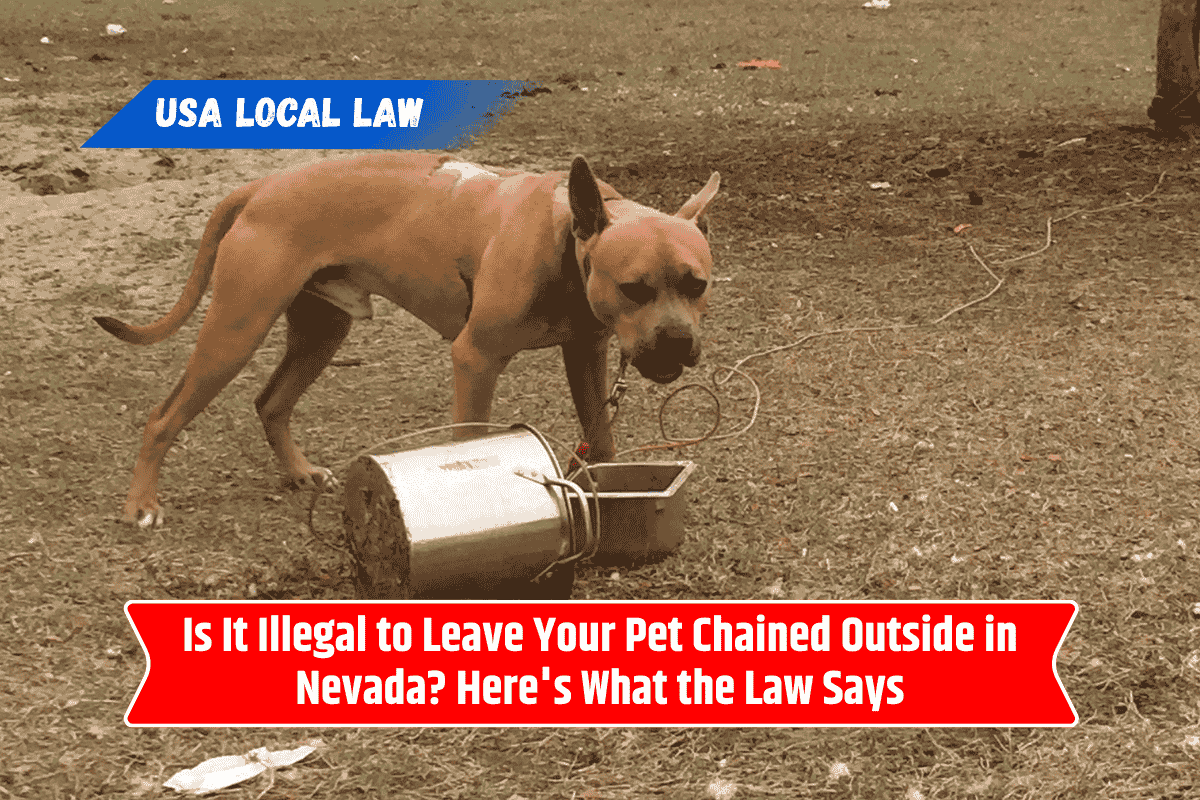If you’re a pet owner in Nevada, it’s important to know that how you treat your animals—especially when they’re kept outside—isn’t just about personal choice. It’s about the law.
Nevada has clear rules when it comes to chaining or tethering pets, and failing to follow them can lead to fines, animal cruelty charges, or even jail time in serious cases.
So, is it illegal to leave your pet chained outside in Nevada? The answer is: yes, in many situations—depending on how and for how long you do it.
Nevada’s Laws on Tethering Pets
Under Nevada Revised Statutes (NRS 574.100), it’s considered animal cruelty to treat pets in a way that causes unnecessary suffering or danger—and that includes how they’re tied up or restrained.
Here are the main rules on tethering:
Pets cannot be tied up in a cruel or unsafe way.
It’s illegal to leave a dog or cat tied up for more than 14 hours within a 24-hour period.
You can’t use chains or ropes that are too short or heavy.
Tethering during extreme weather conditions (hot or cold) is also considered abuse.
So, while you’re not banned from tethering your pet completely, the law limits how it’s done, for how long, and under what conditions.
What Makes Tethering Illegal?
Tethering becomes illegal in Nevada if it causes or risks causing harm, suffering, or distress to the animal. For example:
Using tight collars or heavy chains that restrict movement
Tethering a pet where it can’t access food, water, or shade
Leaving the animal exposed to heat or freezing weather
Using tethering as a form of punishment
Tying up a sick, injured, or very young pet
Also, if your dog becomes tangled, injured, or unable to move due to tethering, you could face legal consequences—even if it was unintentional.
Local Ordinances May Be Stricter
Cities and counties in Nevada may also have stricter rules than the state law. For example:
Las Vegas prohibits continuous tethering in some zones.
Clark County requires that the tether be at least 12 feet long, and the pet must have access to shelter, food, and water at all times.
Reno enforces penalties for pets left outside during extreme weather.
Always check with your local animal control department to know exactly what rules apply in your area.
Penalties for Illegal Tethering
Breaking Nevada’s tethering laws can lead to:
Fines
Animal cruelty charges
Confiscation of your pet
Misdemeanor or felony charges in serious cases
Repeat offenders may face harsher penalties, including jail time or being banned from owning animals in the future.
How to Legally Restrain a Pet Outdoors
If you must restrain your dog or cat outside, follow these safe practices:
Use a lightweight tether that’s at least 12–15 feet long
Ensure your pet has constant access to food, clean water, and shade
Avoid extreme weather: bring pets inside during hot summers or cold winters
Never use choke chains or prong collars for tethering
Check regularly to make sure your pet isn’t tangled or injured
What to Do If You See a Tethered Pet in Trouble
If you see a pet that seems neglected or abused due to tethering:
- Document the situation – Take note of the time, date, and conditions.
- Call animal control or local authorities – Report what you’ve seen.
- Do not confront the owner directly unless the animal is in immediate danger.
In emergencies, especially during extreme weather, some areas allow you to call 911 or break a car window to save a pet—but know the law before taking action.
In Nevada, tethering a pet isn’t outright illegal—but how, when, and for how long you do it matters a lot. Keeping a dog or cat chained up all day, especially in unsafe or harsh conditions, is considered animal cruelty and could land you in serious legal trouble.
As a responsible pet owner, it’s your duty to ensure your animal is safe, comfortable, and cared for—whether indoors or out.
